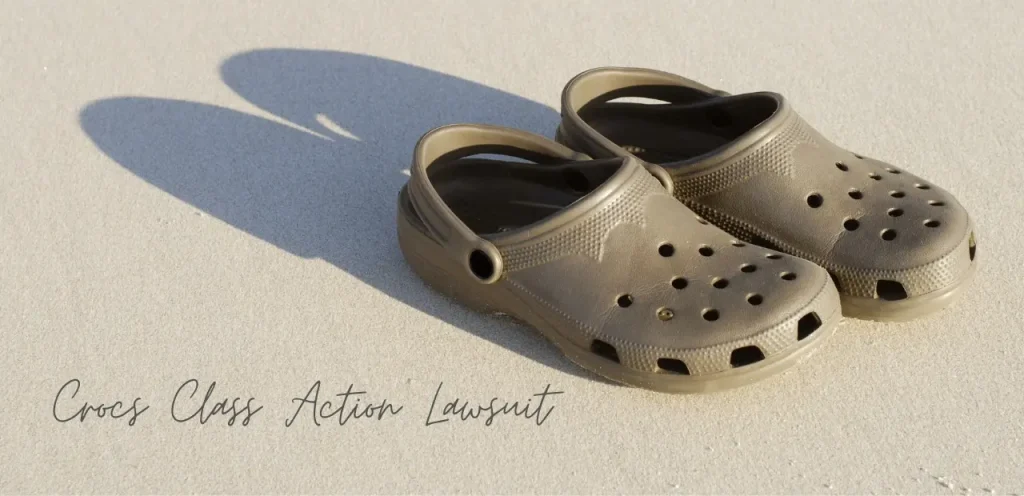Over the past decade, Crocs have become a ubiquitous presence in casual footwear, praised for their lightweight design and unique comfort. However, mounting reports of wearers experiencing foot pain, skin irritation, and unexpected product failures have cast a shadow over the brand’s reputation. In response, a group of consumers filed the Crocs Class Action Lawsuit, alleging that the manufacturer misrepresented the quality and durability of its signature clogs. The lawsuit has drawn significant media attention, as it raises questions about corporate accountability and the standards that companies must meet when marketing mass‑produced goods. As the case progresses through pretrial motions and potential settlement negotiations, affected individuals and observers alike are closely monitoring each development. This legal challenge highlights the broader trend of consumers turning to class action litigation as a means of addressing widespread grievances. Whether the suit will result in a landmark settlement or be dismissed on procedural grounds remains uncertain, but its very existence underscores the power of collective legal action in the modern marketplace.
Understanding the Claims Behind the Crocs Class Action Lawsuit
In the Crocs Class Action Lawsuit, plaintiffs contend that the company’s slip‑on shoes suffer from premature wear, loss of structural integrity, and skin‑related issues caused by low‑quality materials. The complaint asserts that the footwear maker advertised its products as durable, ergonomically designed, and suitable for various environments, yet many consumers report that the shoes cracked, faded, or developed strong odors after minimal use. Legal counsel for the plaintiffs has pointed to internal communications that allegedly show awareness of these problems by company executives. Central to the litigation are claims of breach of warranty, deceptive marketing practices, and unjust enrichment. Additionally, the lawsuit invokes the Magnuson‑Moss Warranty Act to seek relief for customers who feel their statutory and implied warranties were violated. Several state‑level consumer protection statutes, including California’s Unfair Competition Law and New York’s General Business Law, have also been cited to bolster the plaintiffs’ position. The interplay between federal and state claims may affect the scope of damages and the procedural path the litigation follows.
Identifying Eligible Participants in the Crocs Class Action Lawsuit

Potential claimants interested in the Crocs Class Action Lawsuit must demonstrate that they purchased eligible products within the specified timeframe outlined in the complaint. According to the initial filing, the proposed class includes consumers who bought certain models of the brand’s signature clogs, sandals, or slides between January 2018 and December 2023. Individuals who acquired the footwear through authorized retailers, both online and brick‑and‑mortar, may qualify, while wholesale purchasers and employees are generally excluded. To verify eligibility, claimants will need to provide proof of purchase such as receipts, bank statements, or order confirmations. The court may also consider alternative forms of evidence if documentary proof is unavailable. Class members should review the official notice once it is approved by the judge, as it will contain detailed instructions, deadlines, and opt‑out procedures. Deadlines for submitting opt‑out requests and claim forms are critical, as missing these dates may bar individuals from participating or seeking individual relief.
Potential Remedies in the Crocs Class Action Lawsuit
Remedies sought in the Crocs Class Action Lawsuit may include monetary compensation for damaged or defective products, reimbursement for replacement costs, and statutory damages under applicable consumer protection laws. Plaintiffs are pursuing restitution for out‑of‑pocket expenses incurred when products failed to perform as advertised, as well as disgorgement of profits deemed unfairly obtained by the company. In jurisdictions that allow punitive damages for egregious misconduct, the complaint also requests additional penalties designed to deter similar practices in the future. Beyond financial relief, class counsel may negotiate injunctive measures requiring the defendant to enhance quality control protocols, update warranty disclosures, and implement clearer marketing standards. Attorneys’ fees and administrative costs are also subject to approval by the court, and any proposed allocation of settlement funds must be transparent. Any settlement must receive court approval to ensure that the terms are fair, reasonable, and adequate for the entire class.
Timeline and Procedural Developments in the Crocs Class Action Lawsuit

The timeline of the Crocs Class Action Lawsuit has unfolded over several stages, beginning with the initial complaint filed in federal district court in early 2024. After service of process and the defendant’s response, both sides engaged in written discovery, exchanging interrogatories and document requests. Class certification motions were filed in mid‑2024, accompanied by expert reports analyzing failure rates and consumer harm. In response, the company submitted briefs challenging both the adequacy of class representatives and the commonality of the alleged defects. Oral arguments on class certification took place in late 2024, and a decision from the presiding judge is expected in the first quarter of 2025. Concurrently, the parties have participated in settlement discussions, facilitated by a neutral mediator, in an effort to avoid the expense and uncertainty of trial. If certification is granted, the case will move into the damages phase, where evidence of individual losses will be evaluated. Trial is tentatively scheduled for mid‑2025 unless a settlement is reached beforehand.
How to Join the Crocs Class Action Lawsuit

To participate in the Crocs Class Action Lawsuit, eligible individuals generally need to file a claim form before the deadline specified in the court‑approved notice. Class members can access the form online through the settlement administrator’s website or request a paper version via mail. The submission typically requires personal contact information, purchase details, and a declaration under penalty of perjury confirming eligibility. Some claimants may be asked to provide additional documentation to substantiate their losses. It is crucial to adhere to all procedural requirements, including signing and dating the claim form, to ensure the validity of the submission. Individuals who opt to remain in the class will be bound by the outcome, whether by final judgment or settlement. Those who prefer to pursue their own claims independently must opt out by following the opt‑out procedures within the specified timeframe. Consulting legal counsel can help clarify any uncertainties and safeguard individual rights.
Looking Ahead: Implications of the Crocs Class Action Lawsuit
Looking ahead, the Crocs Class Action Lawsuit may set a precedent for how consumer products companies handle warranty disclosures, marketing claims, and quality control. A favorable outcome for plaintiffs could encourage similar litigation against manufacturers in the footwear and apparel industries. Conversely, a dismissal or narrow ruling on class certification could limit the viability of broad consumer class actions and reinforce the importance of individualized claims. Beyond legal ramifications, the case has already prompted the defendant to review its product testing procedures and customer communication strategies. Industry observers note that even outside the courtroom, the public relations impact of class action allegations can be significant. Brands facing similar scrutiny may preemptively enhance transparency to mitigate reputational damage and legal exposure. Regardless of the final result, the lawsuit underscores the increasing willingness of consumers to hold large corporations accountable through collective legal action.






